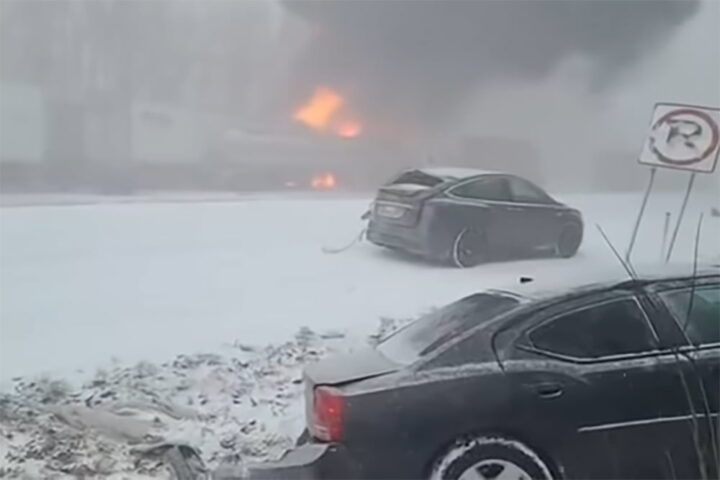Sind bessere Schneeböenwarnungen notwendig? Als ob das kälteste Wetter Ende März seit fast drei Jahrzehnten nicht schon genug Schlagzeilen gemacht hätte, ungewöhnlich starke Schneeböen Schneeböen Am Montagmorgen fegte ein Sturm durch Zentral-Pennsylvania. Ein Sturm löste auf der Interstate 81 in der Nähe von Minersville, Pennsylvania, eine Massenkarambolage mit über 50 Autos aus, bei der mindestens fünf Menschen ums Leben kamen. Obwohl Meteorologen vor dem Sturm gewarnt hatten, fragen sich manche, ob mehr Vorlaufzeit nötig ist.
Die Warnung vor Sturmböen is a relatively new warning type from the National Weather Service. Previously, the NWS issued statements ahead of particularly strong events. Still, several high-profile accidents in the mid-2010s sparked emergency managers to lobby the NWS to treat Schneeböen wie schwere Gewitterstürme oder Wirbelstürme.
Wie ein schweres Gewitter oder Tornado-WarnungDie Warnung vor Schneeböen wird für Orte ausgegeben, die dem Sturm vorausgehen, um die Menschen zu warnen, sich in Sicherheit zu bringen. Wetter-Radios werden für diese Warnungen aktiviert, ebenso wie EAS auf Ihrem Telefon oder über Autobahninformationsschilder.
Keine große Warnung
Die Autofahrer wurden kaum vor den Sturmböen gewarnt. Die Region liegt in einem Gebiet mit schlechter Radarabdeckung in Ost- und Zentral-Pennsylvania, wo der Radarstrahl über das Land hinweggehen kann. Wolken und Niederschlag am Boden. Die nächstgelegenen Radargeräte sind mehr als 80 Meilen von diesem Ort entfernt, was bedeutet, dass der Strahl den Ort in etwa 8.000 Fuß Höhe überflog.
Als die ersten Unfallmeldungen um 10:30 Uhr EDT bei der Polizei eingingen, gab es auf dem Radar keine Hinweise auf starke Niederschläge. Es gab keine Warnung vor Schneeböen: Die erste Warnung für das Gebiet wurde um 12:13 p.m. EDT wegen einer zweiten durchziehenden Böe ausgegeben.
Was ist eine Schneeböe? Mehr lesen
Ohne diese Warnungen werden weder die Wetterradios ausgelöst noch das EAS-System, das die Warnungen auf den Straßenschildern, im Fernsehen oder im Radio anzeigt. Es ist nicht klar, welche Nachricht für die Autofahrer entlang der I-81 zu dieser Zeit ausgehängt wurde, aber PennDOT weist auf seinen Tafeln oft auf mögliche Unwetter hin, wenn sie vorhergesagt werden.
Ist die Antwort auf bessere Schneegestöberwarnungen in Kanada?
Die Lücken in unserer nationalen Wetterradarabdeckung sind nicht leicht zu schließen. Der Ersatz für das Doppler-Radar - das Phased-Array-Wetterradar - ist noch Jahre entfernt. Die Idee eines Meteorologen scheint jedoch ein guter Kompromiss für die Zwischenzeit zu sein.
Erdmans Idee ist nicht ganz neu: Umwelt Kanada hat gehabt Sturmböen-Warnungen und -Warnungen seit Jahren. In Kanada wird die Schneegestöber-Warnung ausgegeben, wenn die Bedingungen für die Entstehung von Schneegestöbern günstig sind.
Die kurzfristigen Wettermodelle sagten die Schneeböen vom Montag so gut voraus, dass, wenn der NWS dazu in der Lage gewesen wäre, eine Schneeböenwarnung gerechtfertigt gewesen wäre. Möglicherweise hätte die Vorwarnung auch ausgereicht, um die Zahl der Autos auf der I-81 zu dieser Zeit zu begrenzen, zumal die Meteorologen anscheinend keine klare Radarsicht auf die Schneeböen vom Montagmorgen hatten.
Es ist unwahrscheinlich, dass ein einzelnes Ereignis den Anstoß für bessere Schneeballwarnungen geben wird. Es bleibt jedoch noch einiges zu tun, um sicherzustellen, dass die Öffentlichkeit diese lebenswichtigen Winterwarnungen sowohl erhält als auch befolgt.



